Although every child develops at their own pace, they do follow fairly predictable milestones, especially when it comes to their physical development.
This article shares the common stages of a child’s physical development in early childhood. There’s also a printable of these milestones at the end of this post.
A child’s motor and physical development depends on four things:
- The development of the brain and body parts.
- The control a child has over each body part.
- How a child learns about their body.
- Learning to use both sides of their body.
A child’s physical skills are an important part of their holistic development and affect all areas of their growth and learning.
Children need to develop physically in early childhood so they can do everyday tasks. Each motor skill is necessary for them to become fully independent.
Motor skills can be categorized into two main groups: gross motor and fine motor. Both work together to help you perform basic everyday functions that you often take for granted.
Gross motor skills involve the large movements of the body. The bigger muscles are engaged in helping to move and function.
Gross motor development involves a child’s muscles, balance, core, posture, coordination, and endurance.
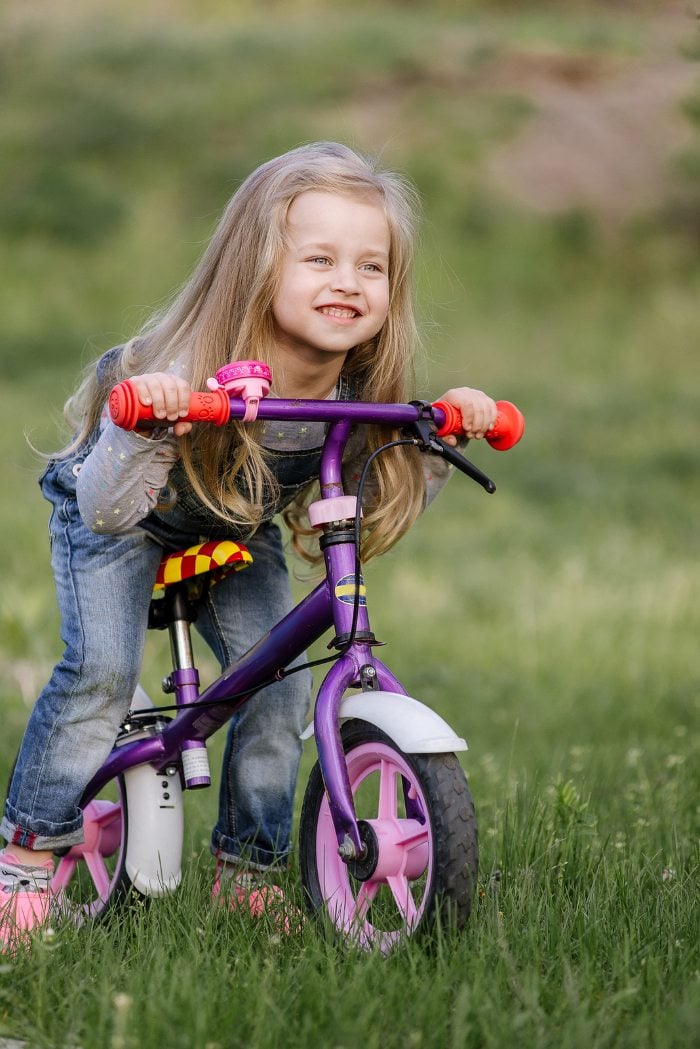
Fine motor skills involve the smaller movements a child makes. From grabbing a toy to writing, these are fine motor skills your child develops during the early years of their life.
Fine motor skills are just as important as gross motor skills and need to develop in order to succeed academically as well as be independent.

Here are the main stages of physical development a child typically follows from birth to the first six years of their life, according to Marike de Witt, author of the book “The Young Child in Context: A psycho-social perspective“.
While every child develops at their own pace, these are general guidelines to follow.
Birth to 6 Months
Gross Motor:
- Newborns begin to lift their chin and hold their head upright.
- As they grow older, they start to lift their torso and raise their upper body.
- They begin to roll back and forth.
- Towards six months, they can sit by themselves and move all their limbs freely.
Fine Motor:
- Early on, children develop a strong grip.
- They then start to become aware of their hands and feet and start moving each finger and toe independently.
- Children start out simply holding a toy without knowing what it is, and eventually shake and pull on toys.
- They begin to hold their bottles and other objects in their hands.
7 – 12 Months
Gross Motor:
- As they reach this stage, children start supporting their weight more.
- They start to crawl and try to stand and walk with assistance.
- Towards the end of this stage, they begin to stop needing assistance and can stand independently.
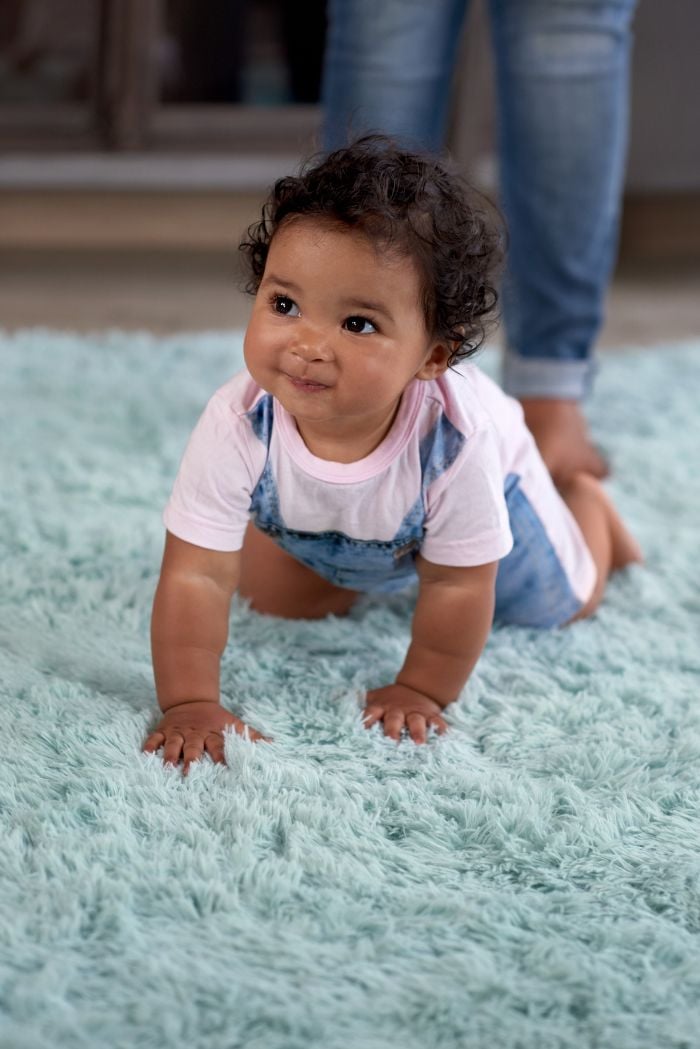
Fine Motor:
- Children start to pick up things precisely by using their index finger along with their thumbs.
- They can feed themselves and pick up objects on their own.
- As they play, they learn to drop one toy to pick up another one.
1 Year
Gross Motor:
- Now that they are a year old, they start to take their first few steps.
- They learn to throw objects and play more sport-like games.
- As they near two years of age, they walk independently and can walk backwards as well.
Fine Motor:
- They start to grab cups and drink out of them.
- Some typical skills you will notice include pointing at objects they desire, building towers out of blocks, scribbling, turning the pages of books, and starting to eat on their own.
2 Years
Gross Motor:
- Now children can run and climb onto objects.
- You will notice them shaking their heads and swinging their limbs.
- They will also start to dance, roll, balance, and jump up and down.
- This is the stage they enjoy playing at playgrounds as well.
Fine Motor:
- They love to build towers using blocks.
- They are able to open a door and undress.
- You will notice them enjoying playing in water and sand by filling containers.
- Learning how to paint is also a typical development at this stage.
3 Years
Gross Motor:
- Once they are 3, they start jumping from steps and balancing on one leg.
- Their coordination and balance really improve as they learn to walk upstairs with one foot at a time and throw a ball without falling over.
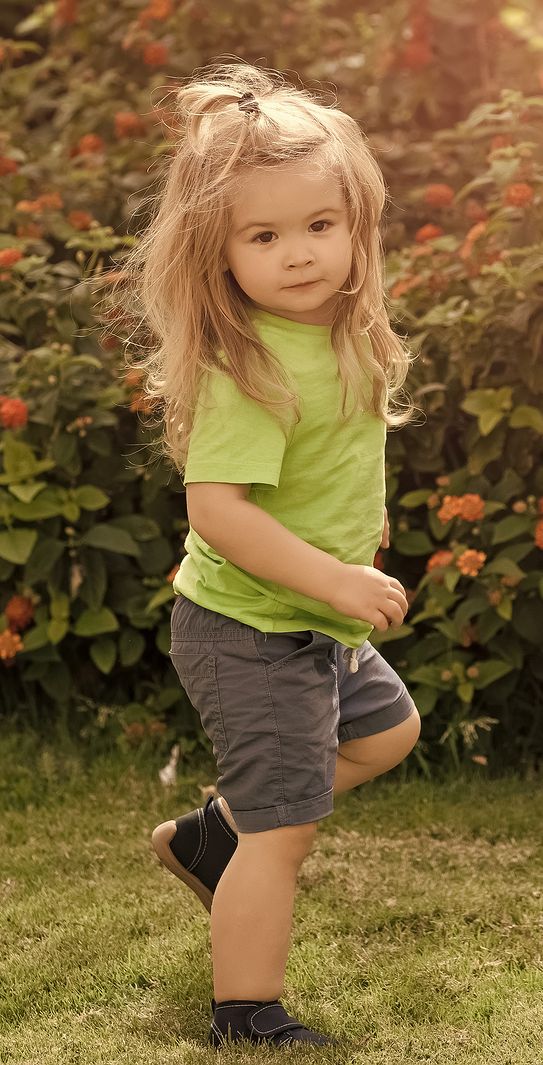
Fine Motor:
- You will start to see them drawing lines and circles while cutting and folding paper as well.
- They can dress a doll and can button clothes themselves.
- You will see them take an interest in more chores as they can make their bed and set the table.
4 Years
Gross Motor:
- Your child will zoom by you as they run quickly and learn to ride a tricycle.
- They skip, hop, and jump all the while using one leg.
- This is the time period when they are super active.

Fine Motor:
- Children become really good at folding papers if they follow an example.
- They can also thread beads and cut quite well.
- You will see an improvement in their drawing and painting abilities.
- They will also start to use clay and mould different objects.
5 Years
Gross Motor:
- This is typically the time children start playing soccer because they can kick a ball while running. They will be able to control their bodies while playing sports and doing other physical activities.
- They are able to control their larger muscles with more ease than the smaller muscles.
- Climbing is also an activity you will see during this age.
Fine Motor:
- Drawing and copying objects they see is performed a lot better at this stage. You will see more circles, crosses and squares in the pictures they draw.
- Soon you will see people, cars, and houses in their drawings as well.
- Their ability to hold a pencil improves and they begin to cut with more control.
6 Years
Gross Motor:
- They will start to jump rope once they turn six years old.
- You will see the more adventurous side of their personality as they tumble, roll, skip, and run around all day long.
- They enjoy running up stairs without help.
Fine Motor:
- At six years old, children can draw a house with windows and doors included.
- They enjoy tearing paper and can do so neatly along the edge.
- Their writing and letter formation start to improve.
Encouraging Physical Development in Children
Parents and teachers are crucial in helping develop their children physically in the early stages.
Both fine and gross motor skills are developed through everyday activities. It is important to find a balance between helping them develop their skills and letting them play freely and develop them independently.
There are many things you can do to encourage the physical development of your children:
- As they are learning to grasp items, place the toy or object on the ground and let them reach for it. This will encourage them to develop both their fine and gross motor skills.
- Tummy time is also a crucial aspect of your infant’s development. Allow time each day for them to spend time on their stomachs.
- As they grow older, play a game of Simon Says to help them become more aware of their body parts.

- Children love to play with playdough. Doing so helps them develop the smaller muscles in their fingers but also engages their creative side.
- Pegboards are a great toy to help your children learn to hold objects and develop control.
- Encourage your kids to play outside to help them develop their gross motor skills. Playing in the sand and water is a great way to help your children develop as they grow older. They learn to have better control over their muscles as they build with the sand and play in the water.
- Playing with blocks has a similar effect on them but also aids in helping them to develop strong thinking skills.
- You can play a game of throw and catch with your children. This helps them develop their hand-eye coordination and focus.
- Drawing or painting helps them to develop their fine motor skills along with cutting out or tearing up objects. Make shapes for them to draw in or cut out, and have them try to get as close as they can to the line. This enables them to have better control over their hand muscles.
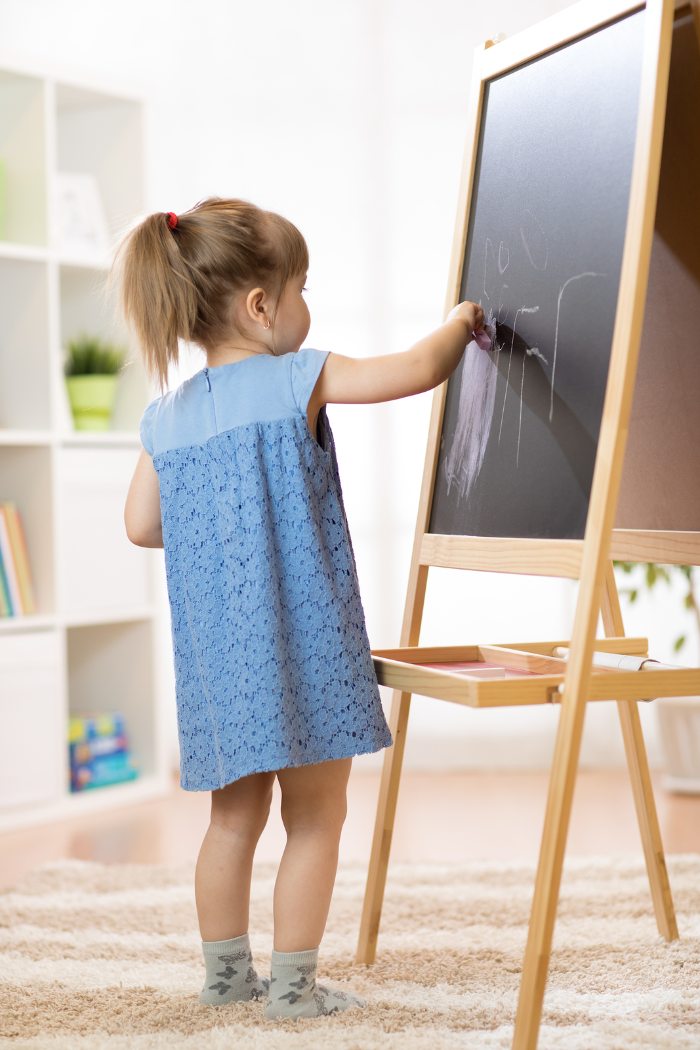
Developing motor skills is a crucial part of the early stages of children’s lives. You make all the difference as a parent or teacher in helping them develop physically.
Make sure to spend time each day practising and playing with them to help them grow strong and independent.
Physical Development in Early Childhood: Milestones From 0 to 6
Notes
Although every child develops at their own pace, they do follow fairly predictable milestones, especially when it comes to their physical development.
This article shares the common stages of a child’s physical development in early childhood.
A child’s motor and physical development depends on four things:
The development of the brain and body parts.
The control a child has over each body part.
How a child learns about their body.
Learning to use both sides of their body.
Gross Motor Skills and Fine Motor Skills
A child's physical skills are an important part of their holistic development and affect all areas of their growth and learning.
Children need to develop physically in early childhood so they can do everyday tasks. Each motor skill is necessary for them to become fully independent.
Motor skills can be categorized into two main groups: gross motor and fine motor. Both work together to help you perform basic everyday functions that you often take for granted.
Gross motor skills involve the large movements of the body. The bigger muscles are engaged in helping to move and function.
Gross motor development involves a child's muscles, balance, core, posture, coordination, and endurance.
Fine motor skills involve the smaller movements a child makes. From grabbing a toy to writing, these are fine motor skills your child develops during the early years of their life.
Fine motor skills are just as important as gross motor skills and need to develop in order to succeed academically as well as be independent.
Stages of Physical Development
Here are the main stages of physical development a child typically follows from birth to the first six years of their life, according to Marike de Witt, author of the book "The Young Child in Context: A psycho-social perspective".
https://www.worldcat.org/title/young-child-in-context-a-psycho-social-perspective/oclc/931816493
While every child develops at their own pace, these are general guidelines to follow.
Birth to 6 Months
Gross Motor:
Newborns begin to lift their chin and hold their head upright.
As they grow older, they start to lift their torso and raise their upper body.
They begin to roll back and forth.
Towards six months, they can sit by themselves and move all their limbs freely.
Fine Motor:
Early on, children develop a strong grip.
They then start to become aware of their hands and feet and start moving each finger and toe independently.
Children start out simply holding a toy without knowing what it is, and eventually shake and pull on toys.
They begin to hold their bottles and other objects in their hands.
7 – 12 Months
Gross Motor:
As they reach this stage, children start supporting their weight more.
They start to crawl and try to stand and walk with assistance.
Towards the end of this stage, they begin to stop needing assistance and can stand independently.
Fine Motor:
Children start to pick up things precisely by using their index finger along with their thumbs.
They can feed themselves and pick up objects on their own.
As they play, they learn to drop one toy to pick up another one.
1 Year
Gross Motor:
Now that they are a year old, they start to take their first few steps.
They learn to throw objects and play more sport-like games.
As they near two years of age, they walk independently and can walk backwards as well.
Fine Motor:
They start to grab cups and drink out of them.
Some typical skills you will notice include pointing at objects they desire, building towers out of blocks, scribbling, turning the pages of books, and starting to eat on their own.
2 Years
Gross Motor:
Now children can run and climb onto objects.
You will notice them shaking their heads and swinging their limbs.
They will also start to dance, roll, balance, and jump up and down.
This is the stage they enjoy playing at playgrounds as well.
Fine Motor:
They love to build towers using blocks.
They are able to open a door and undress.
You will notice them enjoying playing in water and sand by filling containers.
Learning how to paint is also a typical development at this stage.
3 Years
Gross Motor:
Once they are 3, they start jumping from steps and balancing on one leg.
Their coordination and balance really improve as they learn to walk upstairs with one foot at a time and throw a ball without falling over.
Fine Motor:
You will start to see them drawing lines and circles while cutting and folding paper as well.
They can dress a doll and can button clothes themselves.
You will see them take an interest in more chores as they can make their bed and set the table.
4 Years
Gross Motor:
Your child will zoom by you as they run quickly and learn to ride a tricycle.
They skip, hop, and jump all the while using one leg.
This is the time period when they are super active.
Fine Motor:
Children become really good at folding papers if they follow an example.
They can also thread beads and cut quite well.
You will see an improvement in their drawing and painting abilities.
They will also start to use clay and mould different objects.
5 Years
Gross Motor:
This is typically the time children start playing soccer because they can kick a ball while running. They will be able to control their bodies while playing sports and doing other physical activities.
They are able to control their larger muscles with more ease than the smaller muscles.
Climbing is also an activity you will see during this age.
Fine Motor:
Drawing and copying objects they see is performed a lot better at this stage. You will see more circles, crosses and squares in the pictures they draw.
Soon you will see people, cars, and houses in their drawings as well.
Their ability to hold a pencil improves and they begin to cut with more control.
6 Years
Gross Motor:
They will start to jump rope once they turn six years old.
You will see the more adventurous side of their personality as they tumble, roll, skip, and run around all day long.
They enjoy running up stairs without help.
Fine Motor:
At six years old, children can draw a house with windows and doors included.
They enjoy tearing paper and can do so neatly along the edge.
Their writing and letter formation start to improve.
Encouraging Physical Development in Children
Parents and teachers are crucial in helping develop their children physically in the early stages.
Both fine and gross motor skills are developed through everyday activities. It is important to find a balance between helping them develop their skills and letting them play freely and develop them independently.
There are many things you can do to encourage the physical development of your children:
- As they are learning to grasp items, place the toy or object on the ground and let them reach for it. This will encourage them to develop both their fine and gross motor skills.
- Tummy time is also a crucial aspect of your infant’s development. Allow time each day for them to spend time on their stomachs.
- As they grow older, play a game of Simon Says to help them become more aware of their body parts.
- Children love to play with playdough. Doing so helps them develop the smaller muscles in their fingers but also engages their creative side.
- Pegboards are a great toy to help your children learn to hold objects and develop control.
- Encourage your kids to play outside to help them develop their gross motor skills. Playing in the sand and water is a great way to help your children develop as they grow older. They learn to have better control over their muscles as they build with the sand and play in the water.
- Playing with blocks has a similar effect on them but also aids in helping them to develop strong thinking skills.
- You can play a game of throw and catch with your children. This helps them develop their hand-eye coordination and focus.
- Drawing or painting helps them to develop their fine motor skills along with cutting out or tearing up objects. Make shapes for them to draw in or cut out, and have them try to get as close as they can to the line. This enables them to have better control over their hand muscles.
Developing motor skills is a crucial part of the early stages of children’s lives. You make all the difference as a parent or teacher in helping them develop physically.
Make sure to spend time each day practising and playing with them to help them grow strong and independent.
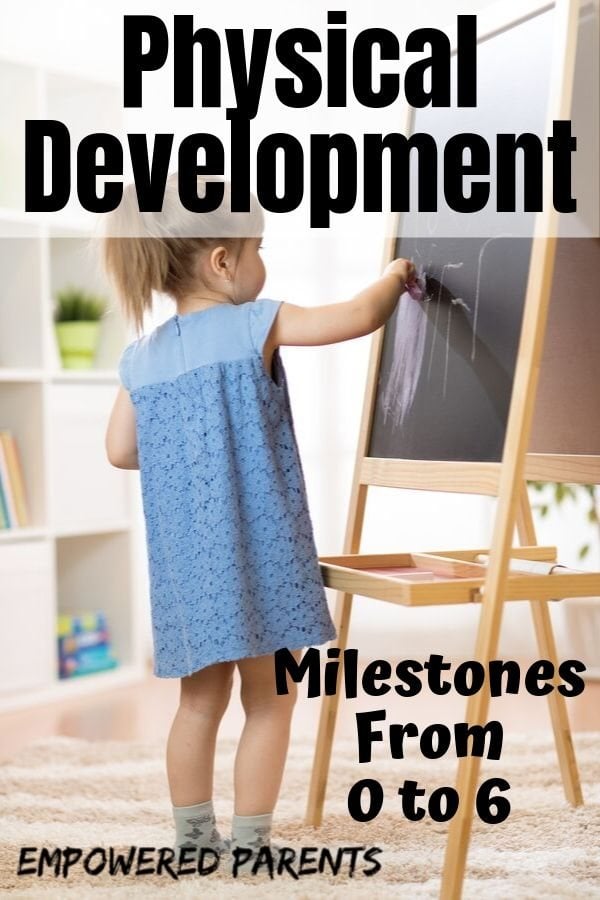
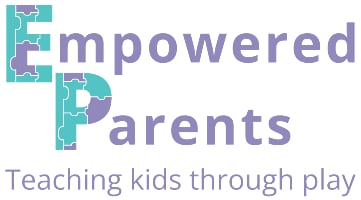
Jane Mutai
Friday 16th of December 2022
Thanks for this enriching information. It is an eye opener. I am very grateful.
Tanja Mcilroy
Saturday 17th of December 2022
You're welcome, Jane! I'm glad you find it useful.
Fercho
Sunday 11th of December 2022
Good evening, this information is so interesting, good job. I would like to cite it on a word document in order to do my homework, please would you mind giving me the date in which you write this information?
Tanja Mcilroy
Monday 12th of December 2022
Thanks for reading!
Tanja Mcilroy
Monday 12th of December 2022
Hi there, it was published on 19 July 2021. Thanks for reading!
Arete
Friday 21st of August 2020
Hello,
though I haven't started out your resources with my toddlers yet but I hope to find them really useful.
I will keep you posted with my progress.
Keep up the good work!
Arete
Tanja Mcilroy
Tuesday 25th of August 2020
I hope you'll enjoy them! Thank you